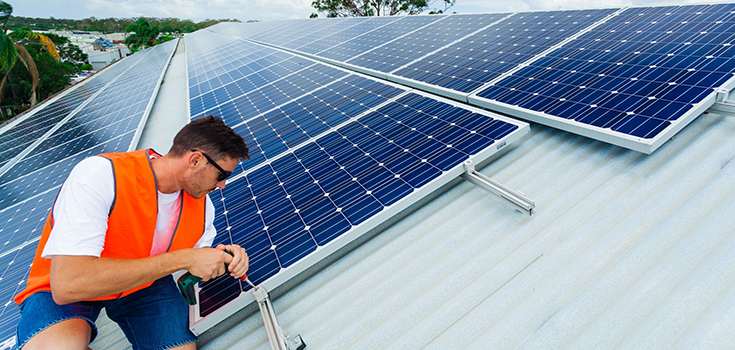This State Set the Record by Powering 6 Million Homes with Solar Energy
This State Set the Record by Powering 6 Million Homes with Solar Energy
California is taking the lead on solar and renewable energy, requiring that 33 percent of electricity come from the sun and wind by 2020 .
. This will up to 50 percent in 2050 in an effort to save resources and better the environment by reducing the need for fossil fuels. This was put into effect by California governor Jerry Brown, who signed the bill in 2015. [1]
Due to a recent heatwave on July 12, 2016, the solar power plants across the state were able to produce a record 8,030 megawatts of electricity around 1:06pm. This is enough energy to power 6 million homes in the Golden (and most populous) state. This is double what was produced in May.
This is also nearly twice as much solar power as the state was able to produce just two years ago, and it doesn’t even include the small rooftop and solar arrays on private homes and businesses statewide.
However, the shift to renewable energy isn’t always easy, as the sun obviously doesn’t shine 24 hours a day. Likewise, the wind isn’t always blowing, making it difficult to capture solar energy every day of the year.
One of the major issues is that solar power often peaks midday, when there isn’t as much of a demand for electricity and energy. The wind power picks up the slack at night, but often not until quite late. This leaves a bit of a lapse, especially because the biggest demand for solar power is around 6pm when families are returning home from work and school, just as the sun is setting.
Read: Whole Foods to Install Solar Units at up to 200 Of Its Stores
The state has to rely on plants that burn natural gas, while trying to create incentives to get people to stop using electricity during the hours in the day when it is most precious.
California’s Pacific Gas and Electric sometimes asks people to power down their devices or turn off their lights during the time when electricity is most precious. But PG&E has entered the 21st century, with 30 percent of its electricity coming from renewable sources. They hope to have 33 percent by the end of this year and 55 percent by 2031.
Because of all of the renewable options, PG&E will close Diablo Canyon, the last nuclear plant in the state, in 2025. [2]
| About Anna Scanlon: | |
| Anna Scanlon is an author of YA and historical fiction and a PhD student at the University of Leicester where she is finishing her degree in modern history. You can find out more about Anna and her books on her lifestyle blog annainwonderland.co.uk. | |
Other Popular Stories:

Post a Comment